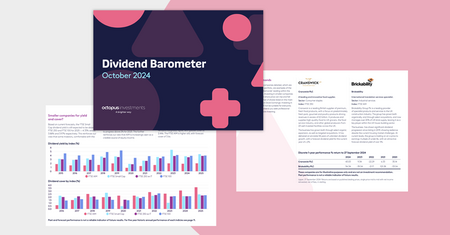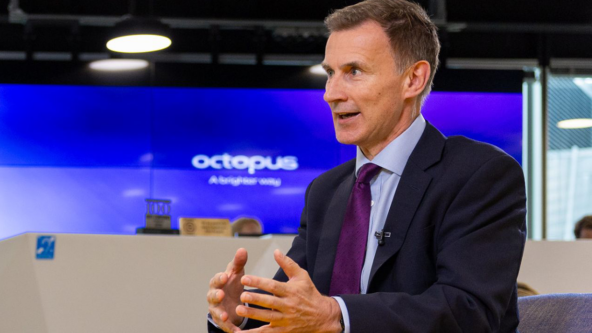Many clients can exhaust traditional tax-efficient investing avenues. So it pays to look beyond pensions and Individual Saving Accounts (ISAs), in this tax year and beyond.
Many of these clients will make full use of their annual ISA allowance, and make significant pension contributions that have compounded over the years.
This is an important client scenario that Mike Hodges and Alistair Candlish of Carrington Wealth Management have come across.
“There’s a lifetime allowance on the total sum of your pension,” says Alistair. “And once clients have gone through that allowance, they ask ‘why should I keep adding if I’m going to get taxed later at a higher rate?’”
“Clients are putting pensions to one side now and saying, ‘I’ve done that, now I’ve got to look at other options.’”
So, what other options are out there?
1. Venture Capital Trusts (VCT)
One option is a Venture Capital Trust (VCT). These are pooled investments where a client invests in a large, listed company, which in turn invests in a portfolio of small companies.
An investor can claim up to 30% income tax relief on the amount invested in a VCT, on up to £200,000 invested each tax year.
“With VCTs you’ve got an initial income tax relief that you can compare to the tax relief on a pension contribution to some extent,” says Alistair.
“You’ve then got tax-free dividends while holding the investment, which I think is a really good feature.”
For these reasons, VCTs have become an attractive complementary way to invest for retirement. But it’s important to set expectations with a client, including the risks.
“You need to help a client understand what to expect from a VCT investment, and the time they have to hold one. A client should only have assets in there they don’t need access to, and they should expect a minimum five-year hold to qualify for tax reliefs.”
Landlords and business owners investing in a VCT
“Landlords can of course claim income tax relief against their rental income when investing in a VCT. This is very helpful,” says Mike.
If landlords want to invest their rental income for retirement, there’s a catch. Pensions require that you contribute relevant earnings, typically from employment which a landlord may not have.
On top of this, landlords can no longer deduct all their mortgage costs from rental income.
Some landlords have turned to VCTs to invest rental income tax-efficiently.
Similarly, you might want to think about business owners who want to extract money from their business.
“A lot of business owners do take income in the form of dividends. And income tax relief can be claimed against this when investing in a VCT,” says Alistair.
2. The Enterprise Investment Scheme (EIS)
Similar to VCTs, an investment in EIS-qualifying companies attracts 30% upfront income tax relief provided shares are held for at least three years. An additional benefit of EIS investments is that relief can also be carried back to the prior year, which is often helpful for planning purposes. In addition, for clients who have realised a capital gain and are looking to invest some of the proceeds from the sale of an asset, EIS carries incremental tax benefits.
Business owners and EIS
Business owners often have complex tax needs, including if a client plans to sell their business.
“Quite often a client is waiting for a big pay day when they sell their business. When that happens, we’re looking at what sort of tax planning we can do,” says Mike.
If a client has sold a business and wants to make investments for the future, a portfolio of investments that qualify for the Enterprise Investment Scheme (EIS) is an option to consider.
Capital Gains Tax (CGT) and Business Relief (BR)
Of special relevance in this scenario are two further reliefs: capital gains tax (CGT) deferral relief and Business Relief (BR).
CGT deferral relief lets a client invest some or all of the capital gain realised on the sale of an asset such as their business and defer the capital gains tax until a later date.
If the investor still owns the shares in EIS-qualifying companies when they die, they can be left free from inheritance tax (BR qualification) provided they have been owned for at least two years at that time or replaced other qualifying assets. If this occurs the deferred gain will also be permanently eliminated.
Bear in mind that any companies invested in must remain qualifying for three or more years in order to benefit from these tax reliefs. Also bear in mind that the generous tax reliefs exist because EIS investments are high risk.
3. Inheritance tax planning
It’s worth having another area of tax planning front of mind for clients this tax year: inheritance tax.
Rising asset values and freezes to the nil-rate bands mean clients could be pulled into the inheritance tax net.
While traditional options like gifting work for many, some clients have concerns about surviving the seven-years required for a gift to be effective. A lot of clients are also concerned about retaining access to their wealth in later life.
It’s likely these concerns have become more important to clients during the uncertainty of the pandemic.
BR-qualifying investments can help clients plan for inheritance tax in a shorter time frame, while also keeping wealth in their own name. If a client holds a BR-qualifying investment for two years, and still holds the shares on death, it is zero-rated for inheritance tax. If circumstances change and the client wants to access their investment, they can request a withdrawal, subject to liquidity. This ability to request withdrawals can give peace of mind and help clients to take action.
A reminder of the key risks
The value of the investments discussed, and any income from them, can fall as well as rise. Investors may not get back the full amount they invest.
Tax treatment depends on individual circumstances and tax rules may change in the future. Tax relief depends on portfolio companies and VCTs maintaining their qualifying status. BR qualification is assessed by HMRC on a case-by-case basis when an estate makes a claim.
VCT shares and the shares of smaller companies are by their nature high risk, their share price may be volatile and they may be hard to sell.
Next steps for tax-efficient planning
For advisers new to this kind of tax planning, getting to know the space is critical.
“Although the tax breaks are terrific, these are investments. And you’ve got to be comfortable with the investment and the team,” says Mike Hodges.
“Get to know it. Get excited about it. Get into it. You’ve got to understand what the investments are and meet the teams.”
Start your journey by learning more about tax-efficient investments and how we can help.








